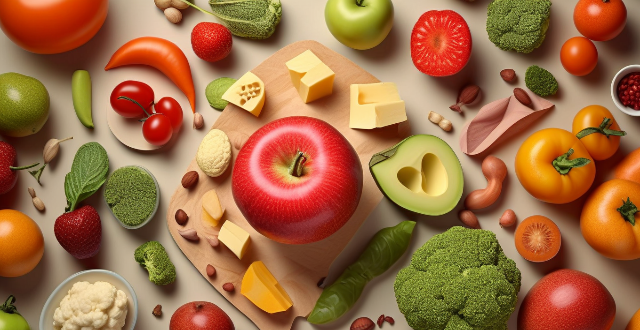Composition is essential in food photography for creating visually appealing images. Techniques such as focusing on the subject, using negative space, incorporating leading lines, following the rule of thirds, and experimenting with color and contrast can enhance the visual appeal of food photographs.

The Importance of Composition in Food Photography
Composition plays a crucial role in food photography. It is the arrangement of elements within a photograph that creates a visually appealing and engaging image. Good composition can make a significant difference in how viewers perceive the food being photographed. In this article, we will discuss the importance of composition in food photography and provide tips on how to achieve great compositions.
Focus on the Subject
The subject of the photograph should always be the main focus. This means that the viewer's attention should be drawn directly to the food being photographed. To achieve this, consider using techniques such as shallow depth of field or selective focus to blur out any distracting background elements. Additionally, try using natural light or softbox lighting to enhance the colors and textures of the food.
Use Negative Space
Negative space refers to the area around the subject that is not occupied by other objects. Incorporating negative space into your composition can help to emphasize the subject and create a sense of balance within the image. For example, if you are photographing a plate of pasta, consider leaving some empty space around the plate to draw attention to the dish itself.
Leading Lines
Leading lines are lines within an image that guide the viewer's eye towards the subject. These lines can be created using various elements such as utensils, tablecloths, or even the shape of the plate itself. By incorporating leading lines into your composition, you can create a more dynamic and interesting image.
Rule of Thirds
The rule of thirds is a basic principle of composition that involves dividing an image into nine equal sections using two horizontal and two vertical lines. Placing your subject at one of the intersections of these lines can help to create a balanced and visually appealing composition. However, it is important to remember that rules are made to be broken, and sometimes breaking away from traditional composition techniques can result in unique and creative images.
Color and Contrast
Color and contrast are essential elements in food photography composition. Using complementary colors can help to make your subject stand out, while contrasting colors can create a sense of depth and dimensionality within the image. Additionally, experimenting with different lighting techniques can help to enhance the colors and textures of the food being photographed.
Conclusion
In conclusion, composition is a critical aspect of food photography that cannot be overlooked. By focusing on the subject, using negative space, incorporating leading lines, following the rule of thirds, and experimenting with color and contrast, you can create visually appealing and engaging images that capture the essence of your culinary creations. Remember to have fun and don't be afraid to experiment with different techniques to find what works best for you!